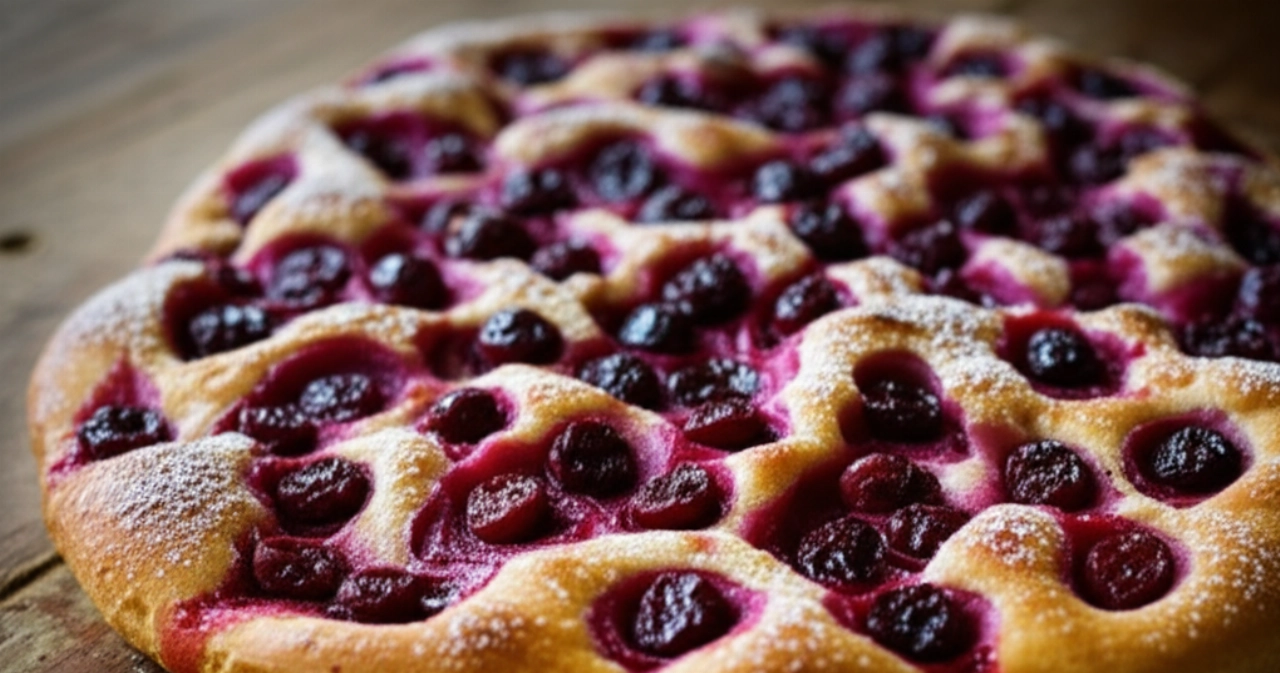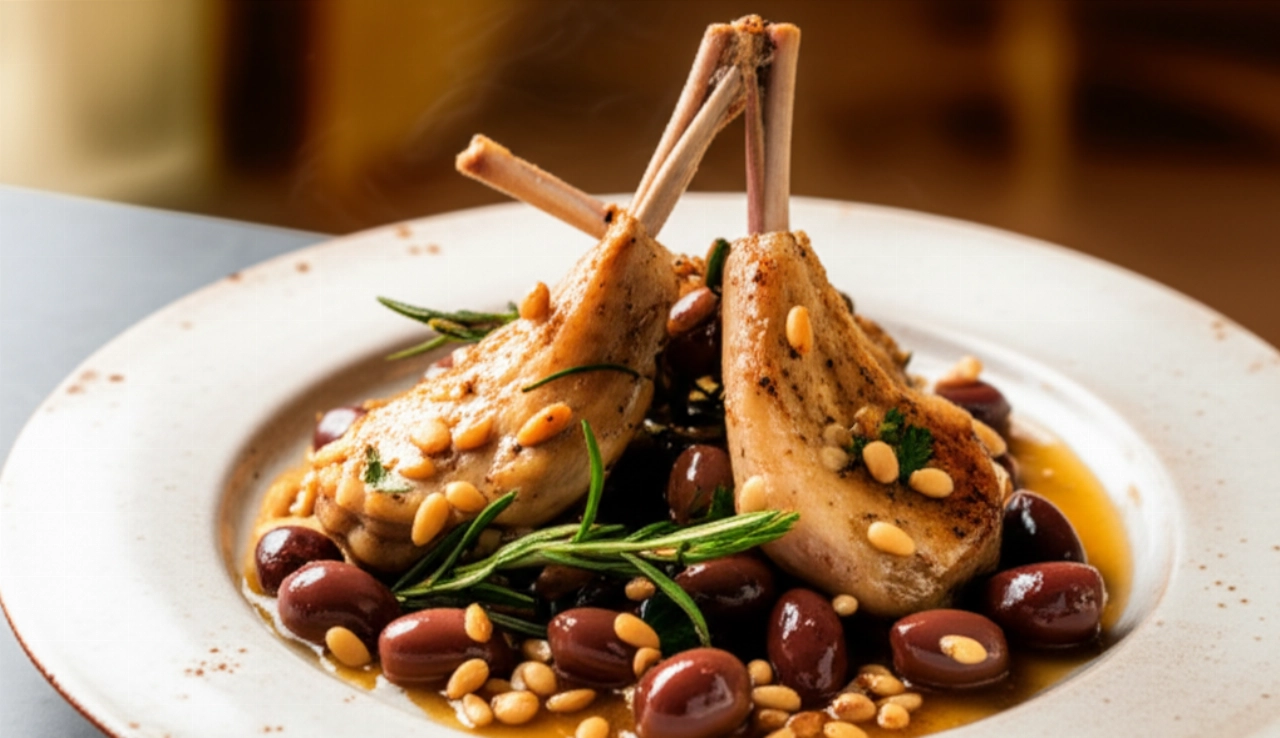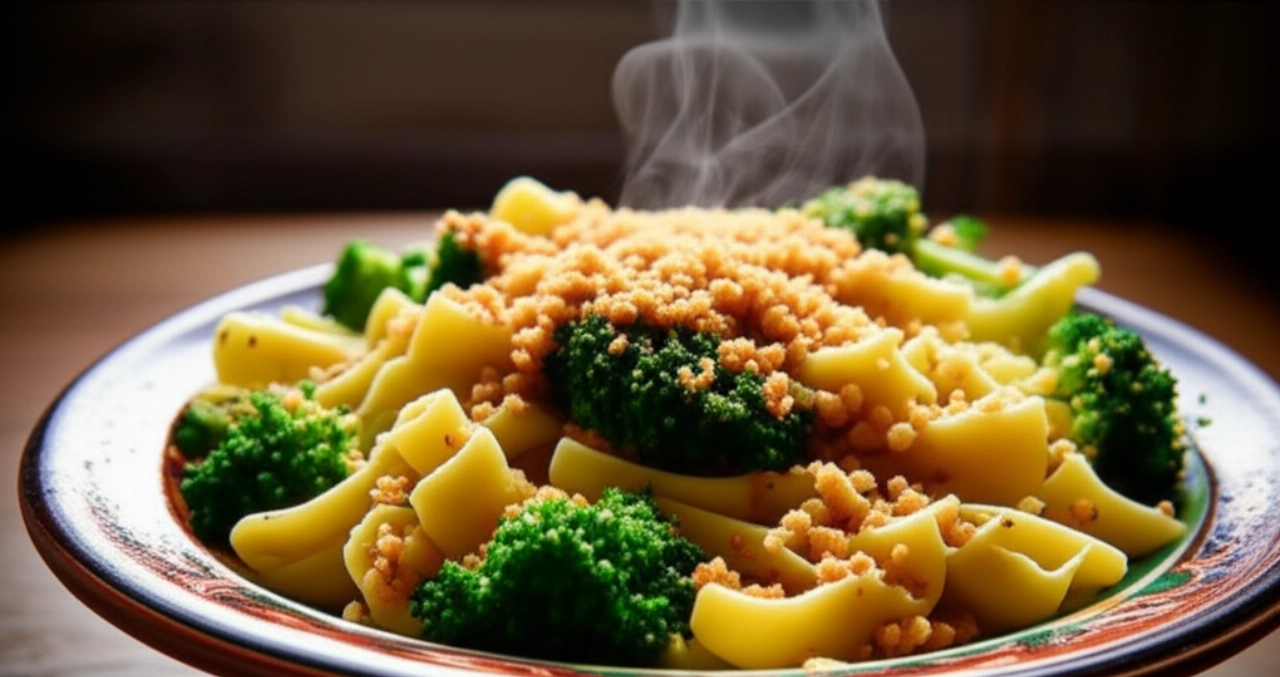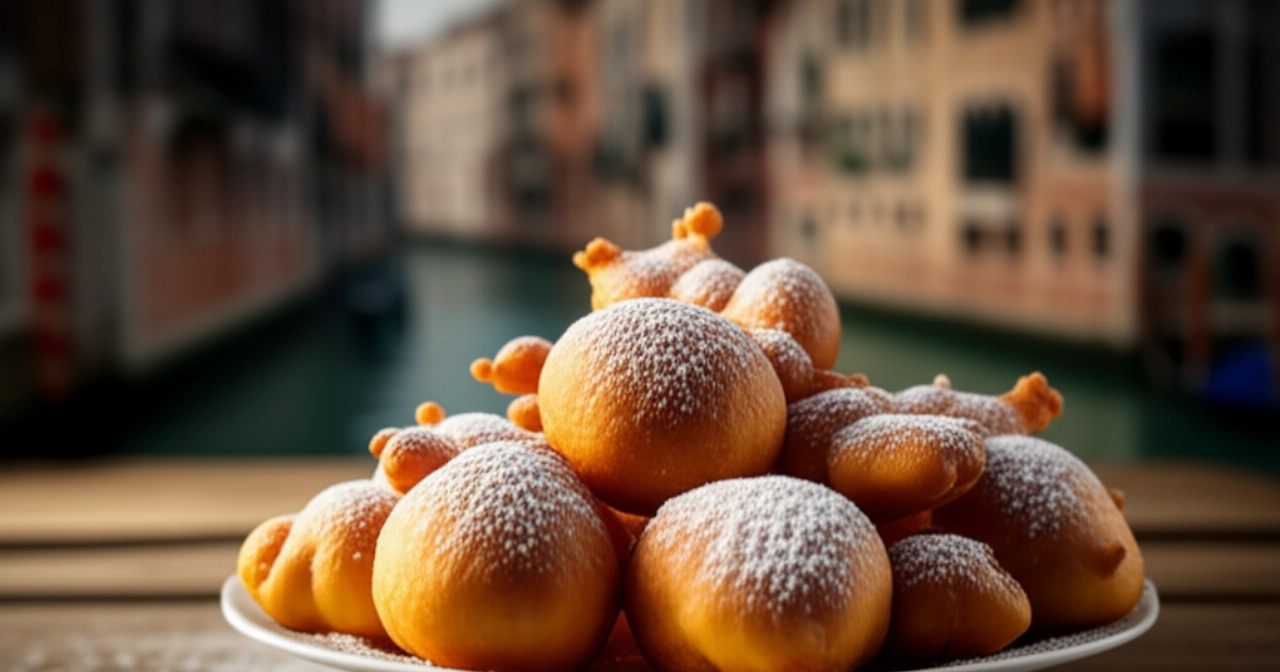Dreaming of savoring a dessert that smells of the forest, autumn, and tradition, a Castagnaccio soft inside and crispy outside, just like your Tuscan grandmother used to make? That unmistakable aroma of chestnut flour, toasted pine nuts, and an aromatic touch of rosemary that envelops you and instantly transports you to the Tuscan hills?
Too often, however, Castagnaccio can turn out dry, gummy, or bland, making you lose the magic of this simple masterpiece. Finding the right recipe, one that guarantees success and the authentic taste of tradition, seems like a challenge. The fear of wasting precious ingredients and not achieving the desired result is a deterrent for many.
Make yourself comfortable. On this page, you won't just find a list of ingredients, but the definitive guide, full of tricks and tips, to prepare the most authentic and irresistible Castagnaccio of your life. Success is guaranteed, and the aroma in your home will be unforgettable. I will guide you step by step to achieve a Castagnaccio that is perfectly moist, with a crispy crust and the perfect harmony between the sweetness of chestnut flour and the aromatic touch of rosemary and pine nuts, never turning out dry or gummy.
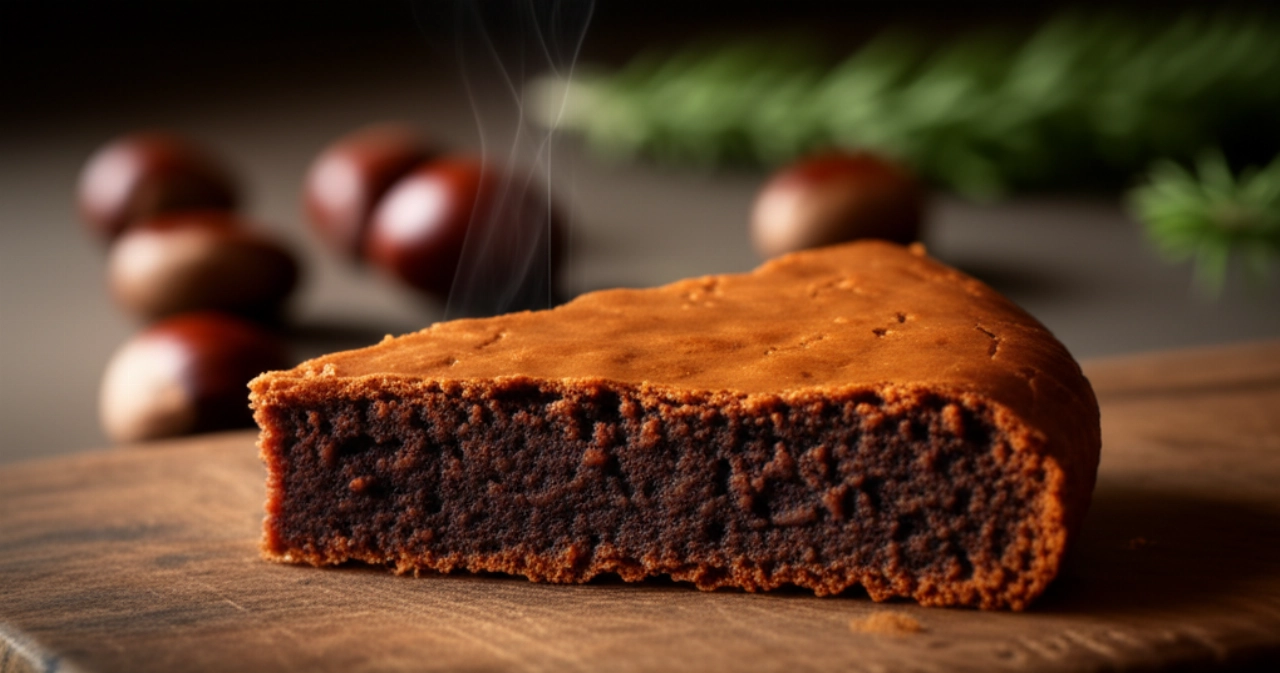
The Perfect Balance: The Secret to Our Foolproof Castagnaccio
Castagnaccio is a humble dessert, but its perfection lies in balance. It's not a dessert that seeks complexity, but the purity of flavors and the right consistency. Our mission is to help you achieve a Castagnaccio that is never dry, never too sweet, but always with that moist consistency and irresistible crust that only the true Tuscan recipe can provide.
The secret lies in balancing the hydration of chestnut flour, which tends to absorb a lot, and not overcooking. I'll reveal how to measure water and oven time for a result that will earn applause, where every bite is a journey between the natural sweetness of chestnuts and the resinous notes of rosemary, enriched by the crunchiness of pine nuts and the softness of raisins. Get ready to discover the true taste of Tuscany.
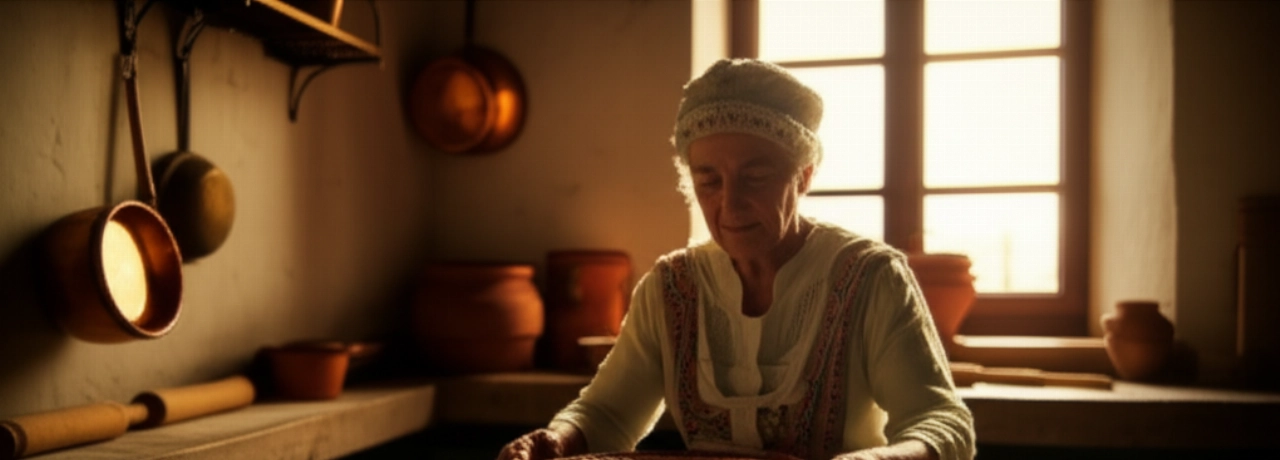
Smart Ingredients for a Dream Castagnaccio: The Choice That Makes the Difference
For a truly memorable Castagnaccio, the quality of the ingredients is fundamental. It's not just a list, but precise choices that will make a difference in the final taste and texture of your dessert.
- Chestnut Flour: This is the main ingredient. Choose fresh, good quality chestnut flour, preferably organic and stone-ground. Old or poor quality flour can make the Castagnaccio bitter or too dry. You'll recognize its freshness by its sweet and delicate aroma.
- Water: Simply room temperature water. Do not use cold water from the refrigerator, as it could make the dough harder to work with and less homogeneous.
- Extra Virgin Olive Oil: A good, delicate, and fruity EVO oil is essential. Do not use oils with too strong or bitter a taste, as they would overpower the delicate taste of the chestnuts. The oil not only binds the ingredients but also contributes to the softness and crust.
- Pine Nuts: Pine nuts add a note of crunchiness and a resinous flavor that pairs perfectly with chestnut flour. You can lightly toast them in a pan before adding them to the dough to enhance their flavor, but it's not mandatory.
- Raisins: Raisins, preferably sultanas, provide natural sweetness and a pleasant softness. Remember to soak them in warm water for about 10-15 minutes before using them, then squeeze them well. This will prevent them from drying out during cooking and ensure an explosion of flavor.
- Fresh Rosemary: Don't underestimate rosemary! It's the ingredient that gives Castagnaccio its characteristic scent and that slightly balsamic note that makes it unique. Always use fresh rosemary; dried rosemary would not have the same aromatic impact.
- Salt: A pinch of salt is essential to enhance all the flavors and balance the sweetness of the chestnut flour. Don't forget it!

3 Common Mistakes That Make Castagnaccio Dry (and How to Avoid Them)
Castagnaccio is a simple dessert, but precisely in its simplicity lie some pitfalls that can compromise the final result. Here are the most common mistakes and how to avoid them for a consistently perfect Castagnaccio:
- Too Much Flour or Too Little Water: Chestnut flour is very absorbent. If the batter is too thick, the Castagnaccio will inevitably be dry and gummy. The batter should have a consistency similar to a thick pancake batter, which pours easily but isn't liquid. Add water gradually and mix well, stopping when you achieve the right consistency. A slightly softer batter is better than one that's too stiff.
- Excessive Baking: The oven is the number one enemy of Castagnaccio's softness. Baking it for too long will make it hard and dry. Castagnaccio is ready when the edges are golden and crispy, and the surface has slightly darkened and shows cracks. Every oven is different, so start checking after about 30-35 minutes and adjust accordingly. It shouldn't be too dark in the center.
- Forgetting to Rest the Batter: After mixing the flour with water, it's crucial to let the batter rest for at least 30 minutes, or even an hour. This allows the flour to fully hydrate, absorbing the water uniformly. A well-hydrated batter will be softer and more homogeneous after baking, preventing lumps and ensuring a velvety texture.
Grandma's Magic Touch: A Tip for a Perfect Castagnaccio
My grandmother, who was a true master at preparing Castagnaccio, always said that the secret isn't just in the ingredients, but in 'feeling' the dough and giving it that final touch that makes it unforgettable. And she passed down a simple but foolproof trick to me: before baking, after pouring the batter into the pan and distributing pine nuts, raisins, and rosemary, drizzle a few drops of extra virgin olive oil over the surface in a thin stream.
Not only does this gesture help form that golden, crispy crust we all love, but it also gives Castagnaccio an unmistakable aroma and flavor, a slightly fruity hint that elevates this dessert from a simple snack to a true sensory experience. It's a small detail that makes a big difference, a secret passed down from generation to generation that will guarantee you a Castagnaccio that truly tastes of home and tradition.
Let's Prepare Tuscan Castagnaccio Together: The Step-by-Step Guide
Ingredients:
- 300 g high-quality chestnut flour
- 500-550 ml room temperature water (adjust based on flour absorption)
- 50 g pine nuts
- 50 g sultana raisins
- 2 sprigs fresh rosemary
- 2-3 tablespoons extra virgin olive oil + oil for greasing the pan
- A pinch of salt
Equipment:
- Large bowl
- Hand whisk or electric whisk
- Sieve
- Round (24-26 cm diameter) or rectangular baking pan
- Parchment paper (optional, but recommended)
Instructions:
- Prepare the Raisins: First, put the raisins in a small bowl and cover them with warm water. Let them soak for at least 10-15 minutes, then squeeze them very well and set aside. This will make them soft and juicy.
- Sift the Flour: In a large bowl, sift the chestnut flour. This step is essential to eliminate any lumps and make the batter smoother and more homogeneous.
- Prepare the Base Batter: Begin to gradually add water to the sifted flour, stirring continuously with a hand whisk. Whisk vigorously to prevent lumps from forming. You should obtain a smooth and homogeneous batter, thick but not too liquid, similar to crêpe batter but slightly more substantial. The amount of water may vary slightly depending on the flour, so add it gradually until you achieve the desired consistency.
- Let the Batter Rest: Once the batter is ready, cover the bowl with a clean cloth and let the batter rest at room temperature for at least 30 minutes (an hour is also fine). This time is crucial to allow the flour to fully hydrate and develop its flavor best.
- Prepare the Oven and Pan: While the batter rests, preheat the oven to 180°C (static oven). Grease a baking pan with a drizzle of extra virgin olive oil and, if you prefer, line the bottom with parchment paper to facilitate removal.
- Add Aromatic Ingredients: After the resting time, take the batter. Add most of the pine nuts (reserve a handful for decoration), the squeezed raisins, finely chopped rosemary needles (or whole, if you prefer a more intense aroma), and a pinch of salt. Gently mix to evenly distribute all ingredients.
- Pour and Decorate: Pour the batter into the prepared pan, spreading it evenly with a spatula. It shouldn't be too thick; usually, a thickness of 1-1.5 cm (0.4-0.6 inches) is ideal. Distribute the reserved pine nuts and raisins and a few fresh rosemary needles over the surface. Finally, drizzle the surface with a thin stream of extra virgin olive oil. This is grandma's trick for a perfect crust!
- Bake and Cook: Bake the Castagnaccio in the preheated oven for about 35-45 minutes. Times may vary depending on the oven, so check. The Castagnaccio will be ready when the edges are golden and crispy, the surface has slightly darkened, and characteristic cracks appear. Do not overbake, or it will become dry.
- Cool and Serve: Once baked, remove the Castagnaccio from the oven and let it cool slightly or completely in the pan before slicing and serving. Castagnaccio is excellent both warm and at room temperature.
Tips and Frequently Asked Questions about Tuscan Castagnaccio
Can I use other dried fruits instead of pine nuts or raisins?
Certainly! While pine nuts and raisins are the traditional ingredients, you can experiment with chopped walnuts, sliced almonds, or chopped dried figs. Each addition will give a personal touch, but for authenticity, I recommend sticking to the original recipe at least the first time.
How do I store Castagnaccio?
Castagnaccio keeps well at room temperature, covered with plastic wrap or in an airtight container, for 2-3 days. In the refrigerator, it can last a few more days, but it tends to harden slightly. Before serving, you can warm it slightly in the oven or microwave to restore its softness.
Is Castagnaccio a gluten-free dessert?
Yes, chestnut flour is naturally gluten-free, making Castagnaccio an excellent option for those with celiac disease or gluten intolerance. Just ensure that all other ingredients (like raisins, if not certified) have not undergone cross-contamination.
Why is my Castagnaccio bitter?
The bitterness of Castagnaccio is almost always due to poor quality or old chestnut flour. Make sure to buy fresh flour from reliable producers. Overbaking can also contribute to a stronger, less pleasant taste.
Can I prepare the batter in advance?
Yes, you can prepare the base batter (flour and water) and let it rest in the refrigerator for a few hours or even overnight. Before baking, bring it back to room temperature, mix well, then add the other ingredients (pine nuts, raisins, rosemary) and proceed with baking.
A Masterpiece of Simplicity: Your Castagnaccio is Ready!
There you have it! Now you hold not just a recipe, but all the secrets to bring to your table a Castagnaccio that tastes of authenticity, tradition, and that warmth only homemade desserts can provide. You've learned to choose the right ingredients, avoid common mistakes, and add that special touch that makes it truly unique. It's not just a dessert; it's a piece of Italian history and flavor that you've created with your own hands.
Don't be afraid to experiment, but start with this solid base, and you'll see that the aroma filling your kitchen will be the first reward, followed by the applause of your diners. Castagnaccio is a dessert that speaks to the heart, perfect for an autumn snack, a light after-dinner treat, or to surprise your guests with an unexpected flavor.
Have you tried our recipe? We're very curious to see your masterpiece! Leave a comment below, tell us how it went, or share a photo on Instagram by tagging @CercaRicette.it. If you loved this Castagnaccio, you can't miss our recipe for Tuscan Cantucci, perfect for dipping in Vin Santo, or another classic of Tuscan tradition like Grape Schiacciata. The kitchen awaits you!
